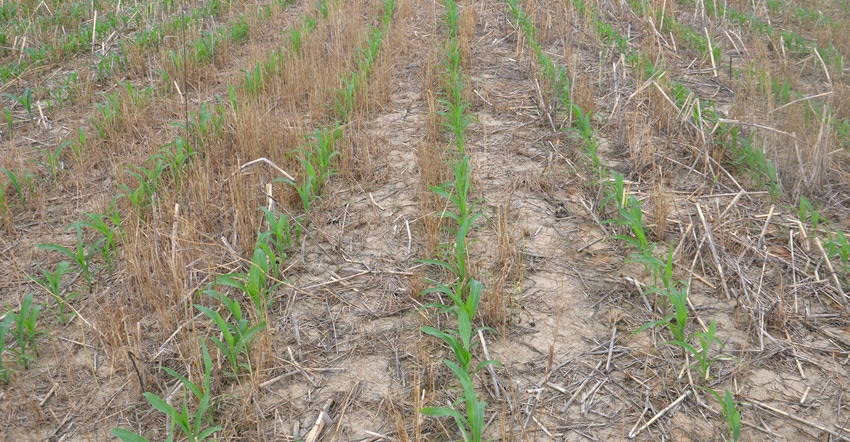
How much help can you get from cover crops in controlling weeds? It’s one of the more controversial topics related to cover crops.
“I look at cover crops as one of the little hammers that you can use to help suppress weeds,” says Bill Johnson, Purdue University Extension weed control specialist. “They’re not going to replace herbicides. Think of it more like utilizing a selective herbicide correctly in your weed control program. With cover crops like cereal rye, you can get help on marestail and early-emerging weeds.”
Recently, Johnson summarized work at Purdue and around the country related to cover crops and weed control:
Fall-germinating weeds. The bottom line is that cover crops don’t provide consistent control of fall-emerging weeds, primarily winter annuals, except for marestail, Johnson says. A six-year Purdue study in the early 2000s at both West Lafayette and Vincennes looked at how well cover crops controlled winter annuals vs. a fall-applied herbicide. By latter stages of the study, fall-applied herbicides provided consistent control, but cover crops did not.
“Some thought cover crops could suppress winter annual weeds, which are alternate hosts for soybean cyst nematode, but our results were inconsistent,” he says. “Year in and year out, cover crops didn’t provide a significant benefit for control of winter annuals like chickweed, henbit and purple deadnettle.”
Marestail control. Marestail germinates in the fall and spring. There is evidence showing that a cereal rye cover crop competes with marestail in the fall, keeping it smaller. “By spring, marestail plants in a cereal rye cover crop are much smaller compared to where there is no cover crop,” Johnson says. “They’re much easier to take out with a burndown herbicide or however you are terminating the cover crop.”
Summer annual weeds. It appears certain cover crops can help suppress summer annual weeds early in the season, Johnson says. These include things like foxtail, lambsquarters and pigweeds. They haven’t been consistently effective against giant ragweed in Purdue research.
“It really comes down to the amount of biomass produced by the cover crop,” Johnson says. “That appears to be what suppresses foxtail and small-seeded broadleaf weeds the most.
“In our work, if you have 2,500 to 3,000 pounds per acre of biomass at planting, weed suppression from the cover crop is very inconsistent. With higher amounts of biomass residue, you begin to see reliable suppression of several weeds across different environments and soil types.”
Planting and termination dates. One reason many people plant cereal rye is because it can be planted later in the fall than most other cover crops. Anecdotal reports indicate cereal rye planted in mid-November often produces a spring rye cover crop.
“You’re going to get a lot more biomass produced if you plant cover crops, even cereal rye, earlier in the fall,” Johnson says. “If you want any chance at suppressing fall-emerging weeds, ideally, you need to seed a cover crop in September.
“You’re going to produce the most biomass, even with cereal rye, with earlier planting in the fall and later termination in the spring. Biomass production peaks at planting date. Our results indicate you see little or no increase in biomass for terminating after planting.”
About the Author(s)
You May Also Like




